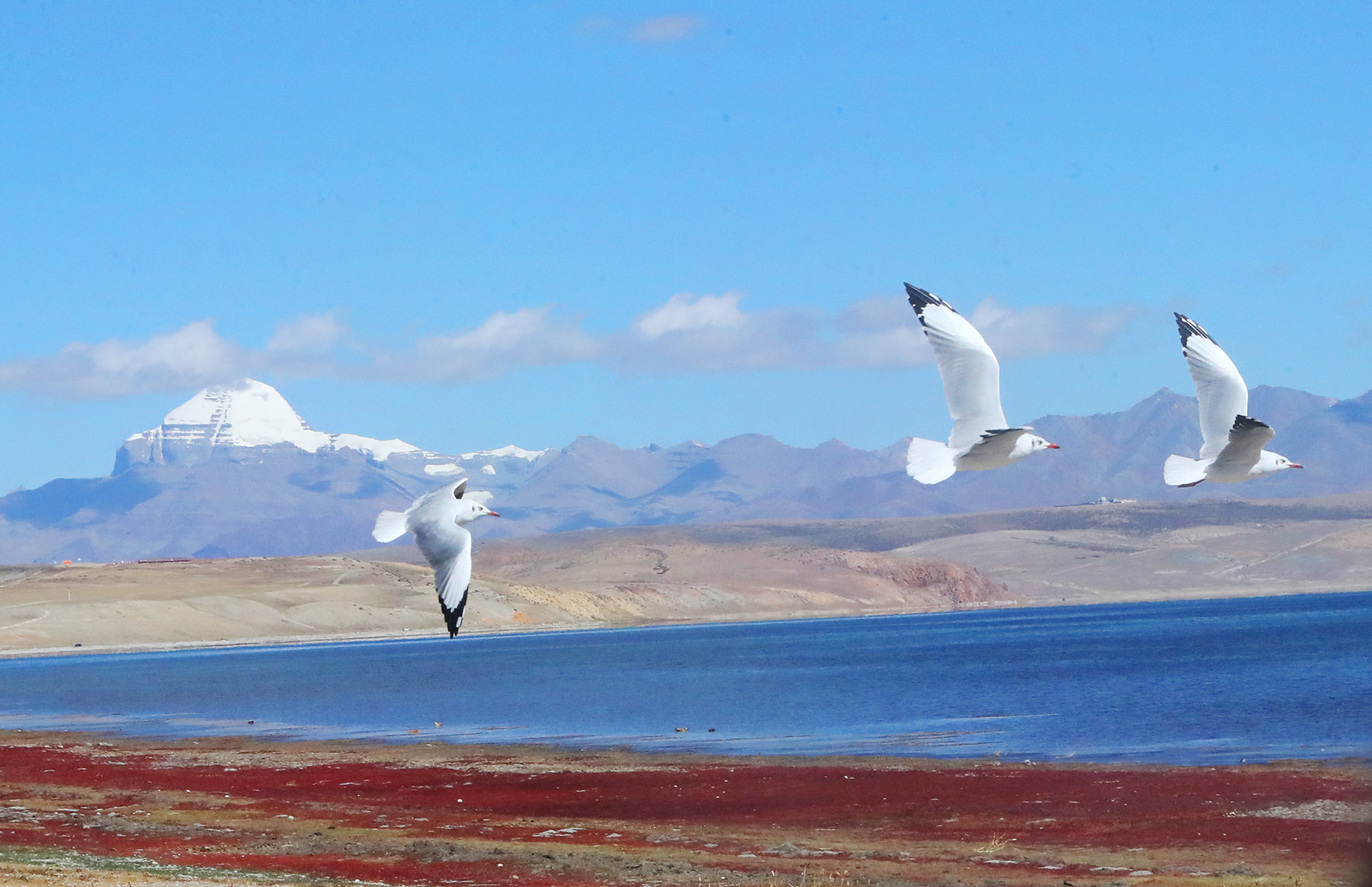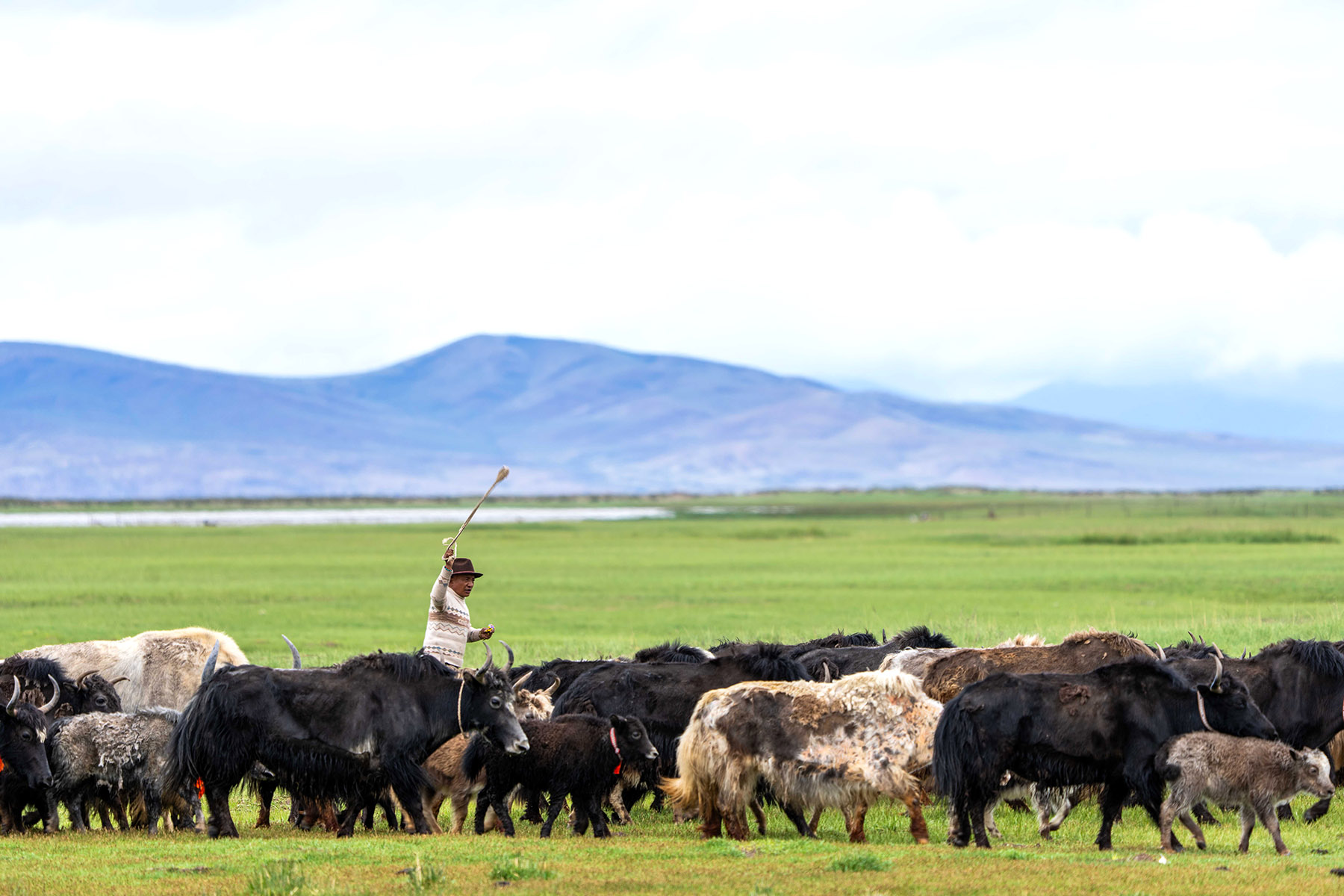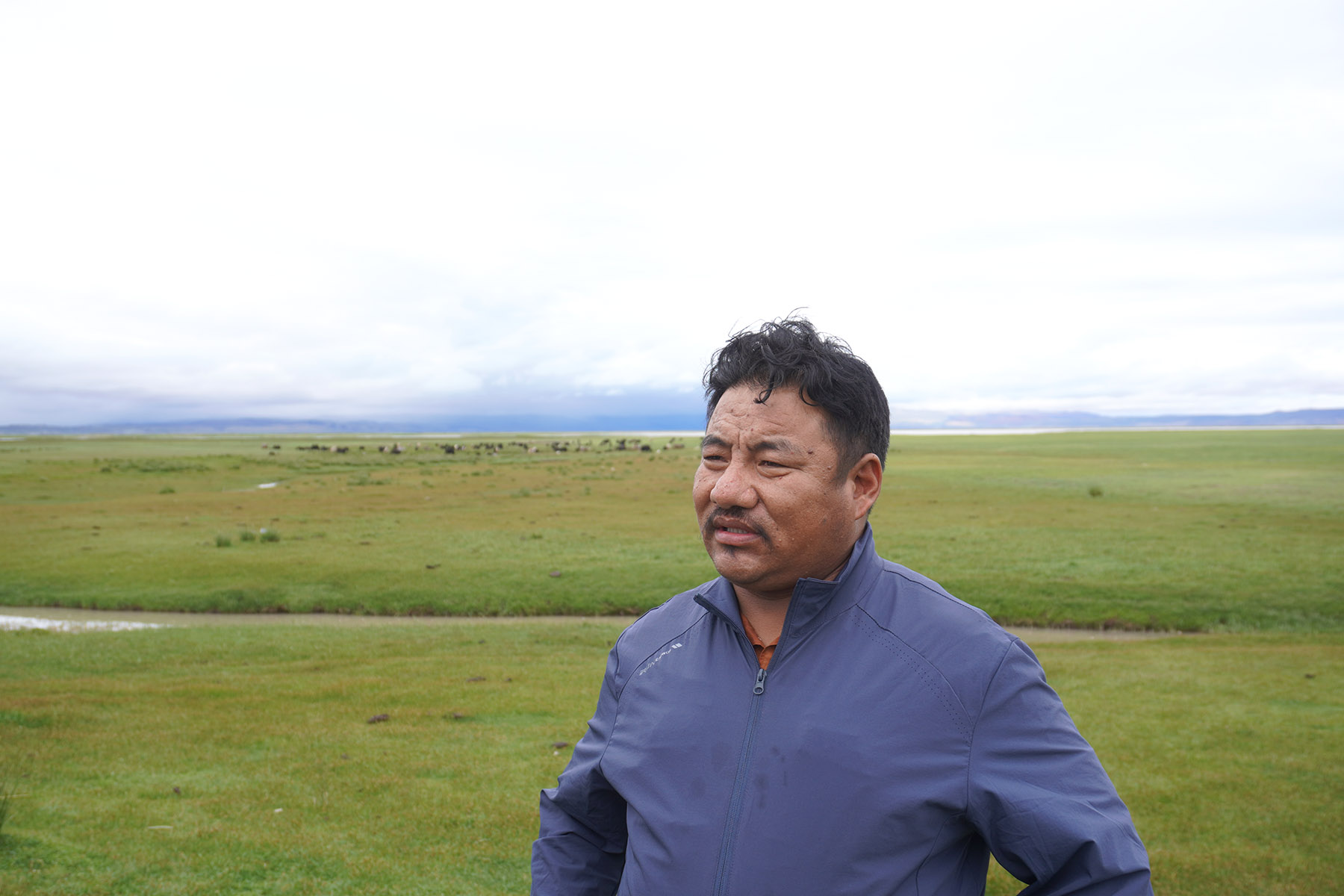Tibetan guardian safeguards sacred lake, contributing to biodiversity in remote Xizang

For more than a decade, Dradul has worked as a guardian of a wetland near Mapam Yumco Lake, which, nestled at an altitude of over 4,500 meters in Burang county of Ngari prefecture, Southwest China's Xizang autonomous region, is the world's highest freshwater lake.
By mid-morning on a typical working day, the 42-year-old will be circling the lake on his motorcycle, traversing a fixed patrol route spanning nearly 10 kilometers.
"In my bag are a pair of binoculars to scan for waterbirds, a notebook to record each patrol's sightings of wildlife species and numbers, along with details such as the weather and water level, as well as garbage bags to collect litter," he said.
READ MORE: Tibetan keeps close watch on 'sacred' black-necked cranes
He also carries what he jokingly calls his "life-saving kit": food, usually zanba, a traditional Tibetan staple made of roasted highland barley, along with drinking water, a thick coat, a hat, sun mask, and simple tools in case he comes across any animal in need.
Referred to as the "Mother of Rivers", Mapam Yumco Lake, also known as Lake Manasarovar, feeds the headwaters of the Ganges, Indus, Sutlej, and Yarlung Zangbo, sustaining life far beyond the Himalayas.
Today, Dradul is one of 90 guardians patrolling nearly 99,000 hectares of the wetland, of which the lake itself makes up about 69,000 hectares.
The guardians' tasks are simple: patrol the reserve, record observations and respond to threats. Yet in a fragile ecosystem perched on the "roof of the world", even small actions carry weight.
In February last year, the guardians discovered an eagle with a broken wing. They carefully transported the bird to a rescue center, feeding it and tending to its injuries until it was strong enough to fly again.
This July, after villagers spotted a wild yak trapped in a mudflat, Dradul and his colleagues, together with local forestry and grassland officials, rushed to the scene but failed to directly pull the yak out. The massive animal, weighing hundreds of kilograms, struggled helplessly.
Finally, by looping ropes around the yak's horns, they pulled carefully, inch by inch, until the exhausted animal was free.
"The rescue process took about 20 minutes. But we stood at a distance afterward for half an hour, watching silently until the yak began to walk and graze again," he said.

Changing attitudes
Beyond rescues, much of a guardian's work involves people. Tourists are gently reminded not to litter, not to drive across fragile grasslands, and to carry out their waste.
"In the past, there used to be a lot of trash in the wetland. Once the wind blew, it scattered everywhere, and there were fewer wild animals," Dradul said. With the guardians diligently patrolling and reminding the visitors not to litter, the wetland's ecosystem has steadily improved over the past years.
Today, the wetland is home to 411 species of plants and 157 species of vertebrates, a remarkable level of biodiversity for such a high-altitude region.
"Watching the prayer flags flutter by the lakeshore, bar-headed geese and ruddy shelducks playing on the water while kiangs (Tibetan wild donkeys) gallop along the shore, I know that I have made my contribution to all this and feel a sense of achievement that nothing else can match," Dradul said.
Just a few years ago, his life was very different. Without steady work, he drifted between temporary jobs, uncertain about the future. That changed in 2014, when he became a guardian of the wetland.
The position now provides him with a stable monthly income of 2,000 yuan ($281), and more importantly, a mission.
"I feel proud to protect the holy lake," he said. "It's more than work. It's about keeping the lake alive for the future so that my children and grandchildren will one day see the same clear waters as I do."

Challenges on the plateau
Yet the work is far from easy. Climate change, which is melting glaciers and shifting rainfall patterns, poses the most daunting challenge.
"The altering of the lake's shoreline and degradation of the grasslands, caused by climate change, are beyond the power of guardians like us," Dradul said.
Human pressure is another constant concern. While most visitors respect the rules, some litter, bathe or even wash cars in the lake, forcing rangers into confrontations.
And then there is the vastness of the task: with nearly 99,000 hectares of wetland and only 90 rangers, there are some remote areas that they cannot patrol every day.
ALSO READ: Qinghai-Tibet Plateau research offers insight into effects of climate change
"I hope that in the future we can use more technologies, such as drones, to help us better fulfill our duties," Dradul said.
Despite the challenges, Dradul's vision for the future is clear. He dreams of Mapam Yumco Lake remaining eternally pure, with Mount Gang Rinpoche reflected in its blue waters for centuries to come.
To this end, he wishes for more young people to take up the work of protection.
"This responsibility must be passed down," he said. "If our hearts are sincere and our hands are diligent, Mapam Yumco Lake will never grow old."
Contact the writer at mojingxi@chinadaily.com.cn


